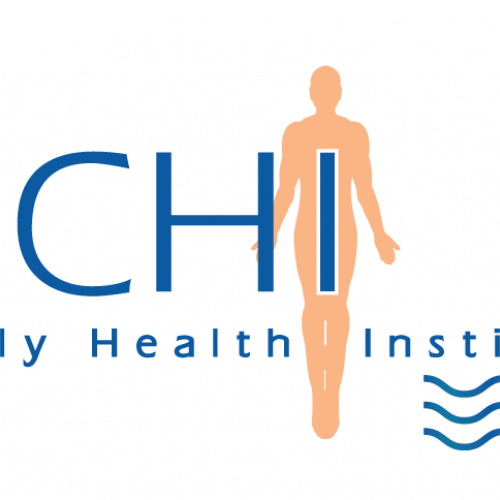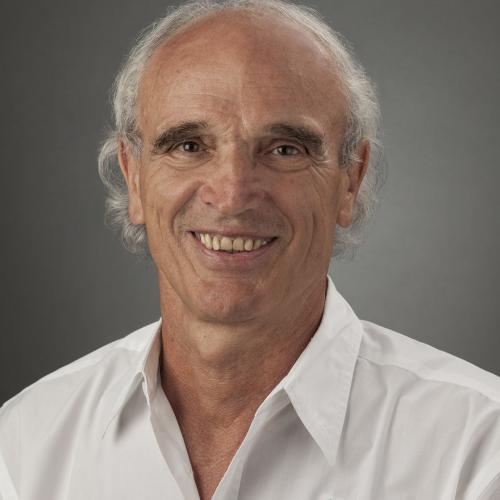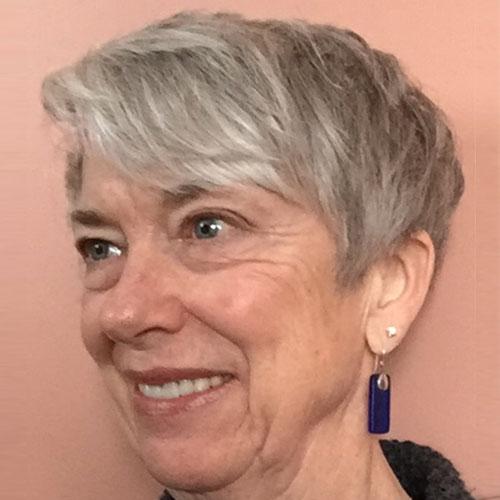In this class, we will be working deep within the interstitial fluid, the ocean in which our cells are nurtured and where life can blossom. These profound techniques connect into the “interior milieu” of our body, an interface between the physical and the non-physical. These interstitial techniques can be applied to almost any structure in the body and often create amazing changes in the body tissue.
We will show important techniques that enable you to work with the transient notochord, a rod-like structure that appears in the human embryo on day 16th-17th. The notochord plays a crucial role in structural as well as signaling information in the developing embryo.
We will apply these techniques to brain structures (hippocampus, hypothalamus) body structures and the birth trauma of the navel, for example.
We will work extensively with veins and notochord: Subclavian, Axillary, Brachial, Radial, Ulnar, Cephalic, Basilic, Femoral, Anterior Tibial (Fibular), Posterior Tibial, Great (Long) Saphenous, Small Saphenous, Internal, External, Anterior Jugular veins, Temporal, Facial, Thyroid, Vertebral veins, Inferior Vena Cava, Portal, Splenic, Gastric, Superior/Inferior Mesenteric, Renal veins.
We will also be working with a new concept that will help you localize deep axes and reciprocal movements in the skin, muscles, viscera, and endocrine glands.
An axis is a fixed reference in the body around which a structure can move, rotate, or have reciprocal movements.
When a structure is out of its axis dysfunction occurs and body structures often present altered physiology.
Working with the axes and reciprocal movement of the muscles, for example, will let you often downregulate in a non-invasive way tense or spastic muscles in a very short time.
We will work with all types of muscles: Short and long head of the Biceps (brachii), Brachioradialis, Levator scapulae, SCM, Trapezius, Scalenes, Rectus Capitis Posterior Minor, Rectus Capitis Posterior Major, Suboccipital triangle (of muscles), Masseter, Temporalis, Orbicularis Oculi, Pectoralis Minor, QL, Hamstrings (Semimembranosus, Semitendinosus, Biceps Femoris)
The same types of applications will apply to musculoskeletal structures, endocrine glands, viscera, and the brain.
Please read "Our Policies" for more information: https://chiklyinstitute.com/Policies
Conflict of Interest: All classes presented by Chikly Health Institute have no financial conflict of interest.
CHI is not sponsored by outside organizations or corporations.
Contact Continuing Education (CE) Hours Total: 18 CEUs for massage therapists - NCBTMB Approved Provider # 451238-10
NCBTMB CEUs are accepted in every US state for NCBTMB certification renewal.
Most states accept NCBTMB for license renewal but not all. We are also approved for NY state.
Please look here for more information: http://www.ncbtmb.org/map/requirements-map.
Because certification and license renewal policies vary from state to state, it's important for you to make sure the CEUs are accepted wherever you practice. Therefore, please be aware that this information may not apply in your state.
Check your state’s website at: http://www.ncbtmb.org/regulators/state-info.
LEARNER’S OBJECTIVES:
- By the end of the 1st day participants will be able to correctly describe the interstitial fluid
technique.
- By the end of the 1st day participants will be able to correctly demonstrate on a live person the
interstitial technique for the peritoneum
- By the end of the 1st day participants will be able to correctly demonstrate on a live person the
interstitial technique for the pericardium
- By the end of the 1st day participants will be able to correctly demonstrate on a live person the
interstitial technique for the interosseous dysfunctions
- By the end of the course participants will be able to correctly demonstrate on a live person how
to release intranotochordal dysfunctions.
- By the end of the course participants will be able to correctly demonstrate on a live person the
Notochordal Technique for umbilical birth dysfunctions.
- By the end of the course participants will be able to correctly demonstrate on a live person the
Notochordal Technique for thymus dysfunctions.
- By the end of the course participants will be able to correctly demonstrate on a live person the
Notochordal Technique for a dysfunction of a vein of the upper extremity.
- By the end of the course participants will be able to correctly demonstrate on a live person the
Notochordal Technique for a dysfunction of a vein of the lower extremity.
- By the end of the course participants will be able to correctly demonstrate on a live person the
Notochordal Technique for a dysfunction of a thyroid vein.
- By the end of the course participants will be able to correctly demonstrate on a live person the
Notochordal Technique for a dysfunction of the internal jugular vein.
- By the end of the course participants will be able to correctly demonstrate on a live person the
Notochordal Technique for a dysfunction of the vertebral vein.
- By the end of the course participants will be able to correctly demonstrate on a live person the
Notochordal Technique for a dysfunction of the facial vein.
- By the end of the course participants will be able to correctly demonstrate on a live person the
Notochordal Technique for a dysfunction of the inferior vena cava vein.
- By the end of the course participants will be able to correctly demonstrate on a live person the
Notochordal Technique for a dysfunction of the portal vein.
- By the end of the course participants will be able to correctly demonstrate on a live person the
Reciprocal Axes & Lines Technique for a peripheral joint.
- By the end of the course participants will be able to correctly demonstrate on a live person the
Reciprocal Axes & Lines Technique for a cranial joint.
- By the end of the course participants will be able to correctly demonstrate on a live person the
Reciprocal Axes & Lines Technique for a scalene muscle.
- By the end of the course participants will be able to correctly demonstrate on a live person the
Reciprocal Axes & Lines Technique for the SCM muscle.
- By the end of the course participants will be able to correctly demonstrate on a live person the
Reciprocal Axes & Lines Technique for the quadratus lumborum muscle.
- By the end of the course participants will be able to correctly demonstrate on a live person the
Reciprocal Axes & Lines Technique for the biceps femoris muscle.
- By the end of the course participants will be able to correctly demonstrate on a live person the
Reciprocal Axes & Lines Technique for the thymus.
- By the end of the course participants will be able to correctly demonstrate on a live person the
Reciprocal Axes & Lines Technique for the thyroid.
- By the end of the course, given the findings of an evaluation of a patient with a specific venous
dysfunction, the participant will be able to correctly design a proper treatment plan using
notochord venous release technique.
OUTLINE
Day One: 6.5 Hours
9:00 – 9:30 am (0.50) Introduction, teachers, teaching assistants and facilitator.
Interstitial fluid technique. Relation with the lymph circulation
9:30 - 11:00 am (1.50) Lab: Application of interstitial fluid technique to Peritoneum, Pleura,
Pericardium and viscera.
11:00 - 11:15 Break / group discussion
11:15 - 12:30 (1.25) Lab: Application of Interstitial fluid technique to scar and fascia.
12:30 - 2:00 Lunch
2:00 - 3:30 Lab: Application of Interstitial fluid technique to intraosseous and interosseous dysfunctions.
3:30 - 3:45 Break / group discussion
3:45 - 5:30 (1.75) Lab: Intranotochordal dysfunctions
Day Two: 6.5 Hours
9:00 - 11:00 (2.0) Lab: Notochord and umbilical birth dysfunctions
11:00 - 11:15 Break / group discussion
11:15 - 12:30 (1.25) Lab: Notochord and heart / thymus / hypothalamus / hippocampus dysfunctions
12:30 - 2:00 Lunch
2:00 – 2:15 pm (0.25) Case Studies
2:15 - 3:30 (1.25) Lab: Notochord and veins of the upper extremity
3:30 - 3:45 Break / group discussion
3:45 - 4:45 (1.0) Lab: Notochord and veins of the lower extremity
4:45 – 5:30 (0.75) Lab: Notochord and veins of the neck, and abdomen
Day Three: 5 hours
9:00 - 10:30 (1.50) Lab: Reciprocal Axes & Lines applied to bones and joints
10:30 - 10:45 Break / group discussion
10: 45 - 12:45 (2.0) Lab: Reciprocal Axes & Lines applied to muscles
12:45 - 2:00 Lunch
2:00 - 3:30 (1.50) Lab: Reciprocal Axes & Lines applied to endocrine glands
B1 or LDT1.
Please fill up the form "Application of Exception" if you feel you can register for this class
Preparation for INReAL
Be sure you clearly understand the following words and, as applicable, know where to locate them in the body:
- Interstitium, Interstitial fluid, Extracellular fluid, Plasma.
- Extracellular matrix, Ground substance, Collagen fibers, Elastic fibers, Glycosaminoglycans (GAGs), Hyaluronic acid,
- Peritoneum, Greater Omentum, Pleura, Pericardium,
- Frontal, Sphenoid, Clivus, Occiput, Parietal bones
- Antimatter, Positron
- Notochord, Chordate, Nucleus pulposus
- Septum of the Heart, Thymus, Thyroid, Hypothalamus, Hippocampus, Pineal, Central sulcus of the Insula (of Rheil), Interoception.
- Veins of the Upper Extremity:
Deep Veins: Subclavian, Axillary, Brachial, Radial, Ulnar
Superficial Veins: Cephalic, Basilic
- Veins of the Lower Extremity:
Deep Veins: Femoral, Anterior Tibial (Fibular), Posterior Tibial
Superficial Veins: Great (Long) Saphenous, Small Saphenous
- Internal, External, Anterior Jugular veins
- (Superficial) Temporal, Facial, Thyroid, Vertebral veins
- Inferior Vena Cava, Portal, Splenic, Gastric, Superior/Inferior Mesenteric, Renal veins
- Hepatic Lobule, Hepatocytes, Central vein of the Liver, Hepatic veins
- Joints: Sphenobasilar, Acromioclavicular, Sternochondral, Lunotriquetral (Lunate – Triquetrum in the wrist), Femorotibial, Talotibial
- Muscles: Short and long head of the Biceps (brachii), Brachioradialis, Levator scapulae, SCM, Trapezius, Scalenes, Rectus Capitis Posterior Minor, Rectus Capitis Posterior Major, Suboccipital triangle (of muscles), Masseter, Temporalis, Orbicularis Oculi, Pectoralis Minor, QL, Hamstrings (Semimembranosus, Semitendinosus, Biceps Femoris)
Price: $950
Early Registration Discount: $750
This discount only applies if you apply $200 down before a class (with a Future Class Registration form) and the class is paid in full 45 days Before class.
(If the class is not paid in full 45 days before the start of class, the rate automatically goes up to $950)
Repeat: $475
If this is your first class (intro class) with us, contact Student Services to see if a $200 discount applies to you.







